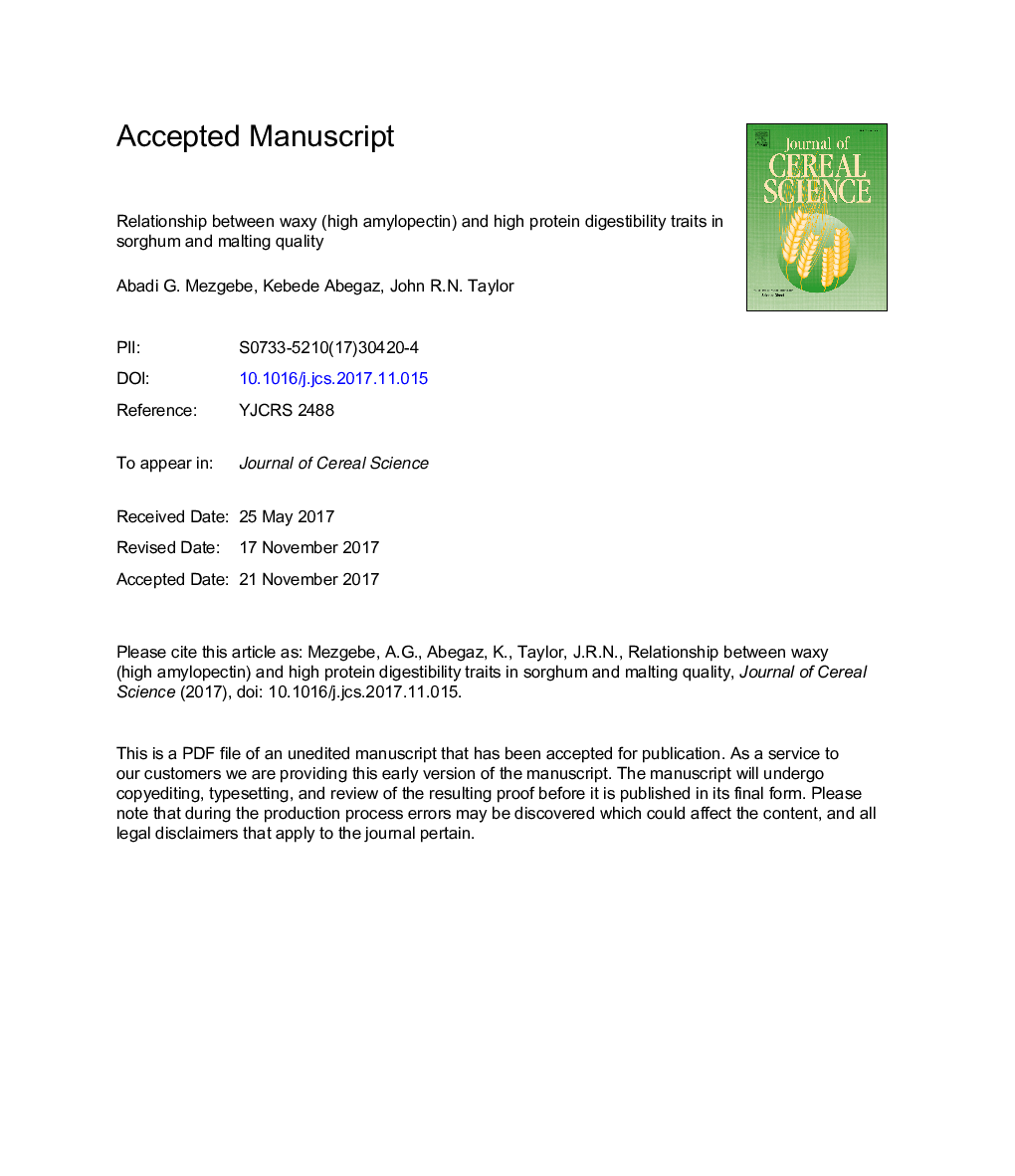| Article ID | Journal | Published Year | Pages | File Type |
|---|---|---|---|---|
| 8881503 | Journal of Cereal Science | 2018 | 30 Pages |
Abstract
This study determined the relationship between waxy (high amylopectin) and high protein digestibility (HD) traits in sorghum and malting quality with the aim of replacing barley malt in arid, tropical regions. Eight sorghum lines with differing endosperm traits: waxy, heterowaxy, waxy-HD, non-waxy-HD and non-waxy-normal digestibility traits were malted at a laboratory scale and their malt quality and modification during malting were studied. Malt from waxy and heterowaxy sorghum lines generally had improved endosperm modification and starch granule degradation. Only non-waxy-HD and one waxy line malts exhibited clear evidence of endosperm protein degradation. Malt α-amylase activity of the sorghum lines varied more than β-amylase activity but neither were evidently affected by the traits. Malt from waxy lines had improved HWE and FAN. Principal component analysis showed that waxy lines were associated with high HWE, FAN, starch and protein loss. The improved malt quality was probably due to the better starch granule swelling property of amylopectin which could have facilitated hydrolysis by amylases and proteases. This study shows that although β-amylase activity is not affected by the waxy trait, white tan-plant waxy sorghum produces higher quality malt than regular sorghum and has potential as a better partial barley malt replacement for brewing.
Keywords
Related Topics
Life Sciences
Agricultural and Biological Sciences
Agronomy and Crop Science
Authors
Abadi G. Mezgebe, Kebede Abegaz, John R.N. Taylor,
